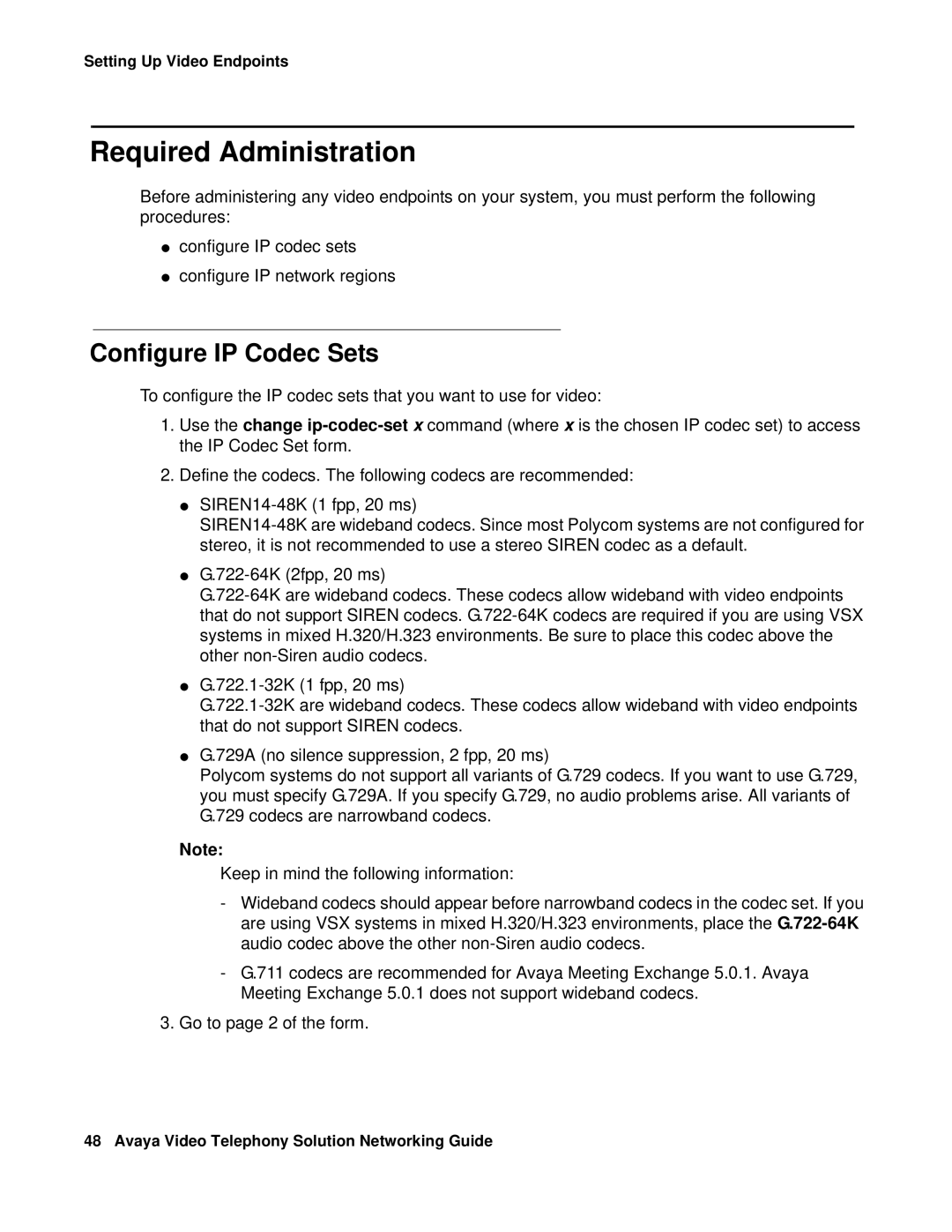
Setting Up Video Endpoints
Required Administration
Before administering any video endpoints on your system, you must perform the following procedures:
●configure IP codec sets
●configure IP network regions
Configure IP Codec Sets
To configure the IP codec sets that you want to use for video:
1.Use the change
2.Define the codecs. The following codecs are recommended:
●
●
●
●G.729A (no silence suppression, 2 fpp, 20 ms)
Polycom systems do not support all variants of G.729 codecs. If you want to use G.729, you must specify G.729A. If you specify G.729, no audio problems arise. All variants of G.729 codecs are narrowband codecs.
Note:
Keep in mind the following information:
-Wideband codecs should appear before narrowband codecs in the codec set. If you are using VSX systems in mixed H.320/H.323 environments, place the
-G.711 codecs are recommended for Avaya Meeting Exchange 5.0.1. Avaya Meeting Exchange 5.0.1 does not support wideband codecs.
3.Go to page 2 of the form.
48 Avaya Video Telephony Solution Networking Guide
